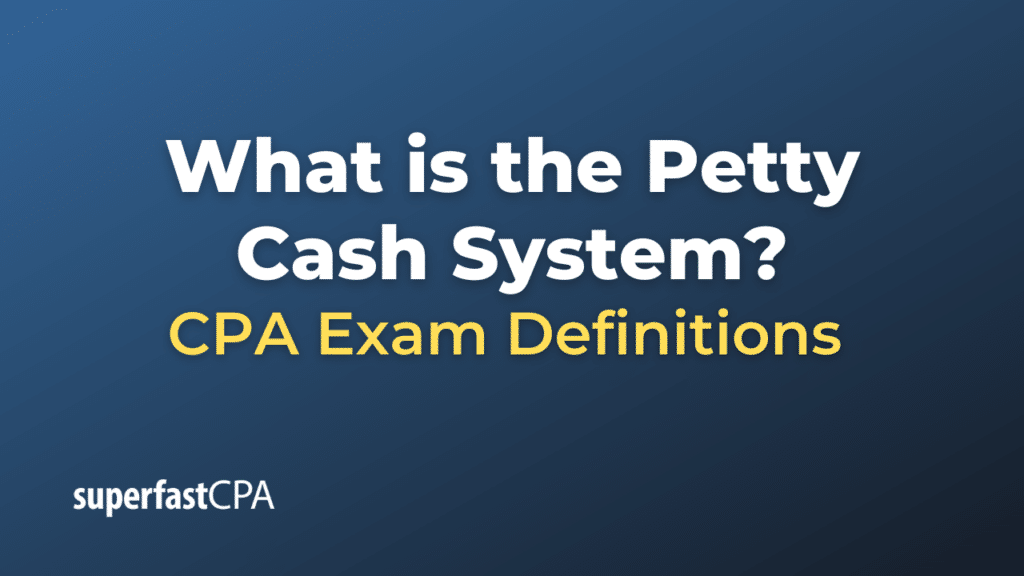Petty Cash System
A petty cash system is a method used by companies to pay for small, miscellaneous expenses. The term ‘petty’ is used to denote that these are minor expenditures, and the cash used for such expenses is often kept in a small box or drawer. A petty cash system is an alternative to writing cheques or using electronic payment methods for small amounts.
A petty cash system usually works as follows:
- Setting Up the Petty Cash Fund: A fixed amount of money is allocated to a petty cash fund. The amount varies depending on the size of the company and the nature of its expenses, but it is typically enough to cover small expenses for a certain period (e.g., a week or a month).
- Designating a Petty Cash Custodian: A trusted employee is designated as the petty cash custodian. This person is responsible for managing the petty cash fund, disbursing cash when needed, and keeping track of all petty cash transactions.
- Disbursing Petty Cash: When an employee needs cash for a small business expense, they request it from the petty cash custodian. The custodian disburses the money and records the transaction, including the date, amount, purpose, and the recipient’s name.
- Recording Transactions: Each time cash is disbursed from the petty cash fund, a receipt or petty cash voucher is created. The receipt or voucher should include the date, the amount, the purpose of the transaction, and the recipient’s signature.
- Replenishing the Petty Cash Fund: When the cash in the petty cash fund gets low, the petty cash custodian totals the receipts, which should equal the amount of cash that has been disbursed. The custodian then requests a check for this amount, cashes the check, and puts the cash back into the petty cash fund.
- Auditing: Periodically, the petty cash fund is audited by an independent person to ensure that the total of the cash and the receipts equals the original petty cash total.
A petty cash system provides a convenient way to pay for small, immediate expenses while maintaining controls and records of these transactions. However, it requires careful management to prevent theft or misuse of the funds.
Example of the Petty Cash System
Let’s walk through an example of a petty cash system in action:
- Setting Up the Petty Cash Fund: XYZ Corporation decides to set up a petty cash fund to handle small office expenses. They allocate $200 for the petty cash fund.
- Designating a Petty Cash Custodian: XYZ Corporation designates Jane, the office manager, as the petty cash custodian. Jane is responsible for managing the petty cash fund.
- Disbursing Petty Cash: One day, an employee named Mark needs to purchase office supplies totaling $30. He asks Jane for the cash. Jane gives Mark $30 from the petty cash fund and records the transaction in a petty cash log.
- Recording Transactions: Jane fills out a petty cash voucher that includes the date, amount ($30), purpose (office supplies), and recipient’s name (Mark). When Mark returns with the office supplies and a receipt, Jane attaches the receipt to the voucher.
- Replenishing the Petty Cash Fund: By the end of the month, Jane finds the petty cash fund has been reduced to $50. She totals the amount of receipts and vouchers, which amounts to $150. Jane then requests a check for $150 from the company, cashes it, and replenishes the petty cash fund back to $200.
- Auditing: At random times, an external auditor checks the petty cash fund. The auditor counts the cash, which totals $200, and checks the recorded transactions. The cash and the recorded transactions match, indicating the petty cash system is functioning properly.
This is a basic example of how a petty cash system could function in a business. The system provides a simple and effective way to manage and control small, immediate expenses.













